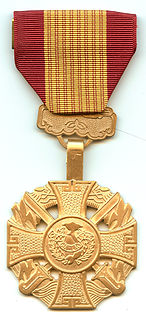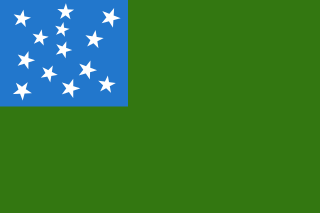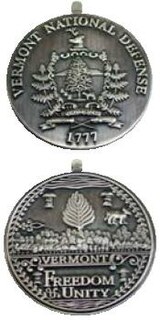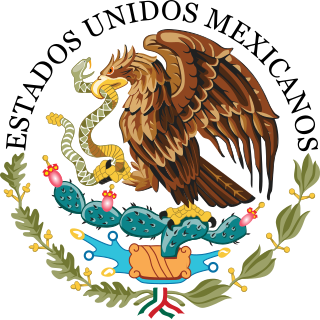The China Service Medal was a service medal awarded to U.S. Navy, Marine Corps, and Coast Guard personnel. The medal was instituted by Navy Department General Order No. 176 on 1 July 1942. The medal recognized service in and around China before and after World War II.

The Republic of Vietnam Gallantry Cross also known as the Vietnamese Gallantry Cross or Vietnam Cross of Gallantry is a military decoration of the former Government of South Vietnam. The medal was created on August 15, 1950 and was awarded to military personnel, civilians, and Armed Forces units and organizations in recognition of deeds of valor or heroic conduct while in combat with the enemy.

The Republic of Vietnam Campaign Medal, also known as the Vietnam Campaign Medal, is a South Vietnamese military campaign medal which was created in 1949, and awarded to French military personnel during the First Indochina War. During the Vietnam War, the South Vietnamese government awarded the Republic of Vietnam Campaign Medal with Device to members of the South Vietnamese military for wartime service and on March 24, 1966, to members of the U.S. military for support of operations in Vietnam. In May 1966, other allied foreign military personnel became eligible for the award.
The Vietnam Service Medal is a military award of the United States Armed Forces established on 8 July 1965 by order of President Lyndon B. Johnson. The medal is awarded to recognize service during the Vietnam War by all members of the U.S. Armed Forces provided they meet the award requirements.

The World War I Victory Medal was a United States World War I service medal designed by James Earle Fraser.

The American Defense Service Medal was a military award of the United States Armed Forces, established by Executive Order 8808, by President Franklin D. Roosevelt, on June 28, 1941. The medal was intended to recognize those military service members who had served on active duty between September 8, 1939, and December 7, 1941.

The Texas Cavalry Service Medal is the ninth highest campaign/service award that was issued to a service member of the Texas Military Forces.

The Republic of Vietnam Civil Actions Medal also known as the Vietnam Civil Actions Medal or Civil Actions Medal, is a military decoration of the former South Vietnamese government (1955–75). The medal was created on May 12, 1964 during the Vietnam War. The Civil Actions Medal was awarded to the South Vietnamese military and its allies' military personnel or units that performed outstanding achievements in the field of civil affairs. The medal was awarded in two classes, with the first-class intended for commissioned officers and the second class for enlisted personnel. Individuals who were cited received the medal, ribbon, and a citation.

The awards and decorations of the Civil Air Patrol are "designed to recognize heroism, service, and program achievements" of members of the Civil Air Patrol (CAP) of the United States of America. The CAP is the official auxiliary of the United States Air Force, and these awards are made to improve the esprit de corps of members. These awards are all worn in the form of medals or ribbons and all are considered civilian decorations. Civil Air Patrol regulations allow them to only be worn and displayed on appropriate CAP uniforms. In order to be considered for one of these awards, an individual must be a member in good standing of the Civil Air Patrol at the time of the act being recognized. There is a statute of limitations for these awards and all recommendations must be submitted within 2 years of the act being performed. It is possible for the next of kin of deceased persons to be presented awards to which a member was entitled, but which he or she did not receive. Award review boards are established at the region, wing, group, and squadron levels to consider recommendations for all awards and decorations.

Lewis Addison Grant was a teacher, lawyer, soldier in the Union Army during the American Civil War, and later United States Assistant Secretary of War. He was among the leading officers from the state of Vermont, and received the Medal of Honor for "personal gallantry and intrepidity."

The Vermont National Guard is composed of the Vermont Army National Guard and the Vermont Air National Guard. Together, they are collectively known as the Green Mountain Boys. Both units use the original Revolutionary War-era Flag of the Green Mountain Boys as their banner. Their strength in 2009 was 2,660.

The Vermont Veterans Medal is awarded to U.S. veterans from Vermont. If the service was only in the Vermont National Guard, they must have been activated during a conflict or be retired. The medal was established in 1999, but is retroactively available to veterans of prior military service.

The Vermont Distinguished Service Medal is awarded to U.S. veterans from Vermont who served in a combat theater. The medal was established in 1999, but is retroactively available to veterans of prior military service.

During the American Civil War, the State of Vermont continued the military tradition started by the Green Mountain Boys of American Revolutionary War fame, contributing a significant portion of its eligible men to the war effort.

Stephen Thomas, manufacturer, politician, jurist, and Union Army officer. He was a recipient of the Medal of Honor for gallantry.

This is a list of military decorations awarded by the United Mexican States as part of the Mexican Honours System.
Colombian military decorations date back as far as the founding of the country. An early decoration was the Cruz de Boyacá that was awarded to the generals who led their forces to victory in the Battle of Boyacá in 1819. This early decoration lives on today as an incarnation of the highest order presented by the Colombian state. There is one decoration higher, but it is only awarded for military conflicts in defence of Colombia. Other than military decorations, Colombia presents decorations on behalf of the National Government, decorations for the National Police, and decorations from the Congress of Colombia.

The Queen's Volunteer Reserves Medal (QVRM) was created by Royal Warrant of Queen Elizabeth II on 29 March 1999. Only 13 Queen's Volunteer Reserves Medals may be awarded in a year. The medal is presented only to members of the Volunteer Reserves of the British Armed Services for exemplary meritorious service in the conduct of their duties. The QVRM is a Level 3 award and ranks in military order of wear immediately after the British Empire Medal. It is the first exclusive award to Volunteer Reserves that is presented at an investiture. The first awards were announced in the 1999 Queen's Birthday Honours with these first awards presented at an investiture on 5 November 1999.
The Croix de guerre (French) or Oorlogskruis (Dutch), both literally translating as "Cross of War", is a military decoration of the Kingdom of Belgium established by royal decree on 25 October 1915. It was primarily awarded for bravery or other military virtue on the battlefield. The award was reestablished on 20 July 1940 by the Belgian government in exile for recognition of bravery and military virtue during World War II. The post-1940 decoration could also be awarded to units that were cited. The decoration was again reestablished by royal decree on 3 April 1954 for award during future conflicts.














